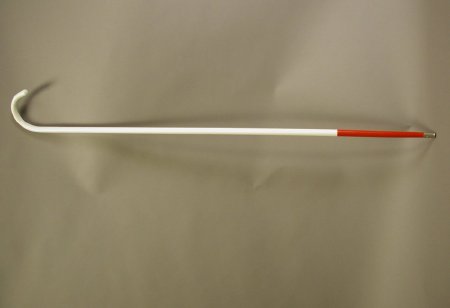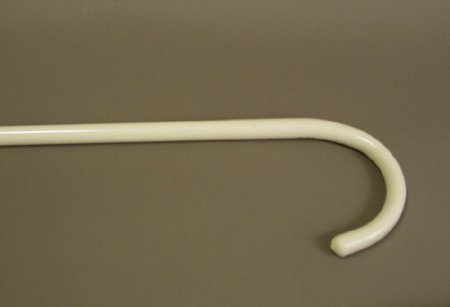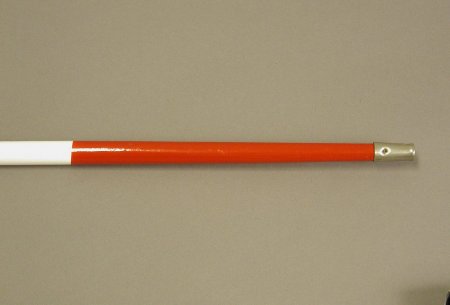Object ID:
2007.33.36
Title:
Basic long cane with crook
Description:
Wooden white cane with steamed 4.5" diameter crook; body enameled white, lower 8" dipped in red; crimped nickel-plated tinplate tip.
Dimensions:
H-49.25 W-0.75 D-5.5 inches
Provenance:
In 1930, George Bonham, president of the Peoria Lions Club conceived the concept of a red-tipped white cane to enable drivers to recognize a blind person trying to cross the street. Ultimately, a ordinance was passed in Peoria requiring drivers to stop and assist the blind individual to cross the street safely. Over the next 35 years, this ordinance shaped virtually all the White Cane laws adopted by the 48 states in continental USA. This cane is a slightly longer example of the type of cane required under those ordinances and available from a number of traditional cane manufacturers. Richard Hoover , originator of much of modern O&M technique at Valley Forge Hospital, PA., at the end of WWII, found fault with these style canes as O&M tools, citing their short length (standard white canes were 36-40" long), weight, ungraceful appearance, and poor conducting quality. They were inexpensive, however, and continued to be sold into the 1980s.
Credit Line:
Gift of Association for Education and Rehabilitation of the Blind and Visually Impaired


